We’ve released a new feature in 3D cockpit view – a Flight Path Vector (FPV) display.
The Flight Path Vector as shown in CloudAhoy mimics the display of an aircraft’s avionics during flight. It shows the path the plane is flying, which may be different from the heading.
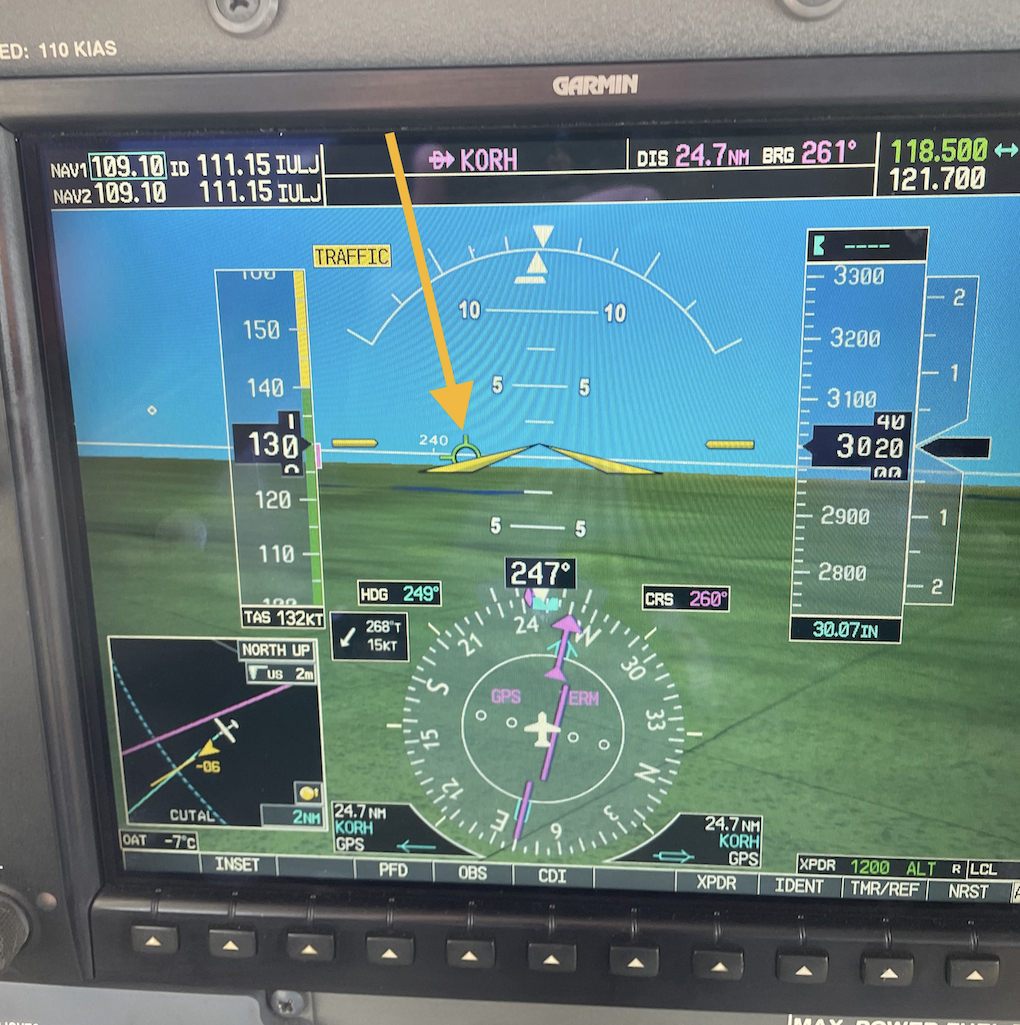
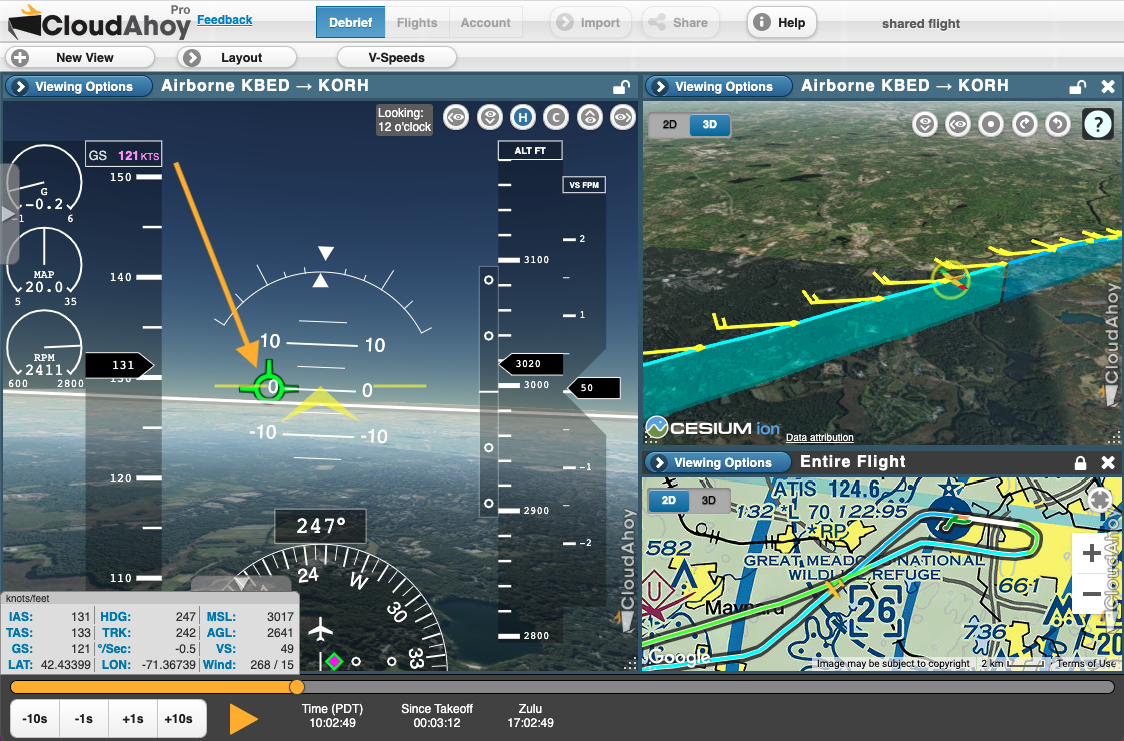
Flight Path Vector in flight Flight Path Vector in CloudAhoy debrief (computed)
Debriefing with Flight Path Vector
The Flight Path Vector is a powerful tool for debriefing:
- Approach / aiming point: was my aiming point on the runway where I wanted it?
- Wind correction e.g. crabbing: did I over correct or not put in enough correction?
- Straight and level flight: how well did I maintain altitude?
- Level turns: did I climb/descend during the turn?
Initially used in the heads up display (HUD) of fighter aircraft, the Flight Path Vector (also called the flight path marker or velocity vector) is now an industry standard used by Garmin, Avidyne, Rockwell Collins, X-Plane and others. The Flight Path Vector can be found in most modern primary flight displays (PFD) and as a key feature of glass cockpit synthetic vision. The Flight Path Vector provides situational awareness for professional, military, and general aviation pilots.
Examples
- Approach / aiming point
Below, the FPV indicates that the pilot had a nice aimpoint at the beginning of the runway. A Flight Path Vector fixed to an aimpoint on the runway, not bouncing around is often a good indicator of a stabilized approach and landing.
- Wind correction e.g. crabbing
In this example, the aircraft is facing a strong crosswind from the right. The nose of the aircraft is pointed to the right, crabbing into the wind. The FPV is lined up nicely with the runway centerline, indicating that the wind correction angle is correctly applied.
- Maintaining altitude in slow flight
Here we debrief a slow flight, just as the stall is imminent. This flight path angle shows how even though the attitude of the aircraft is pitched up, the Flight Path Vector is below the white horizon line and indicating that the aircraft is actually descending, unable to maintain level flight as it reaches a stall.
How does CloudAhoy create the Flight Path Vector?
CloudAhoy creates it using GPS position data. To compute the FPV during animation, CloudAhoy connects a line between a previous and current position of the aircraft, and extends it forward. Extending it all the way to the ground shows where the aircraft would be if it continued its current trajectory, and that point is where the FPV symbol is placed. If the aircraft is climbing we place the FPV symbol above the horizon at an imaginary point where the aircraft would be if its trajectory continues.
—
F-18 pilots, landing on an aircraft carrier, depend on their Flight Path Vector. Yet, it is a powerful debriefing tool even for $100 hamburger sorties, even if you fly a 6-pack avionics aircraft.
The Flight Path Vector was added as part of working with Embry-Riddle faculty, per their suggestion and request. The Flight Path Vector is available for Standard and Pro users.
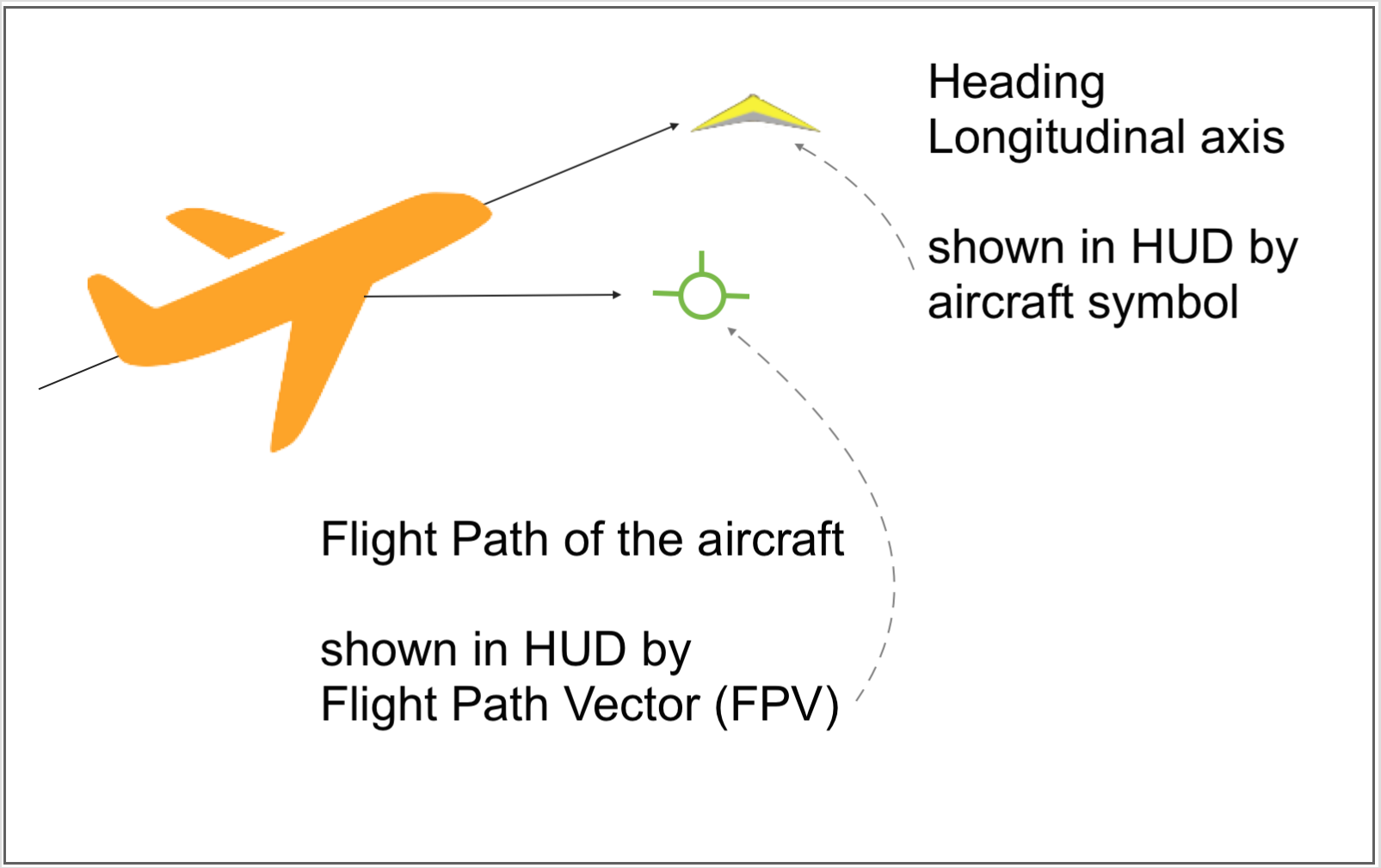

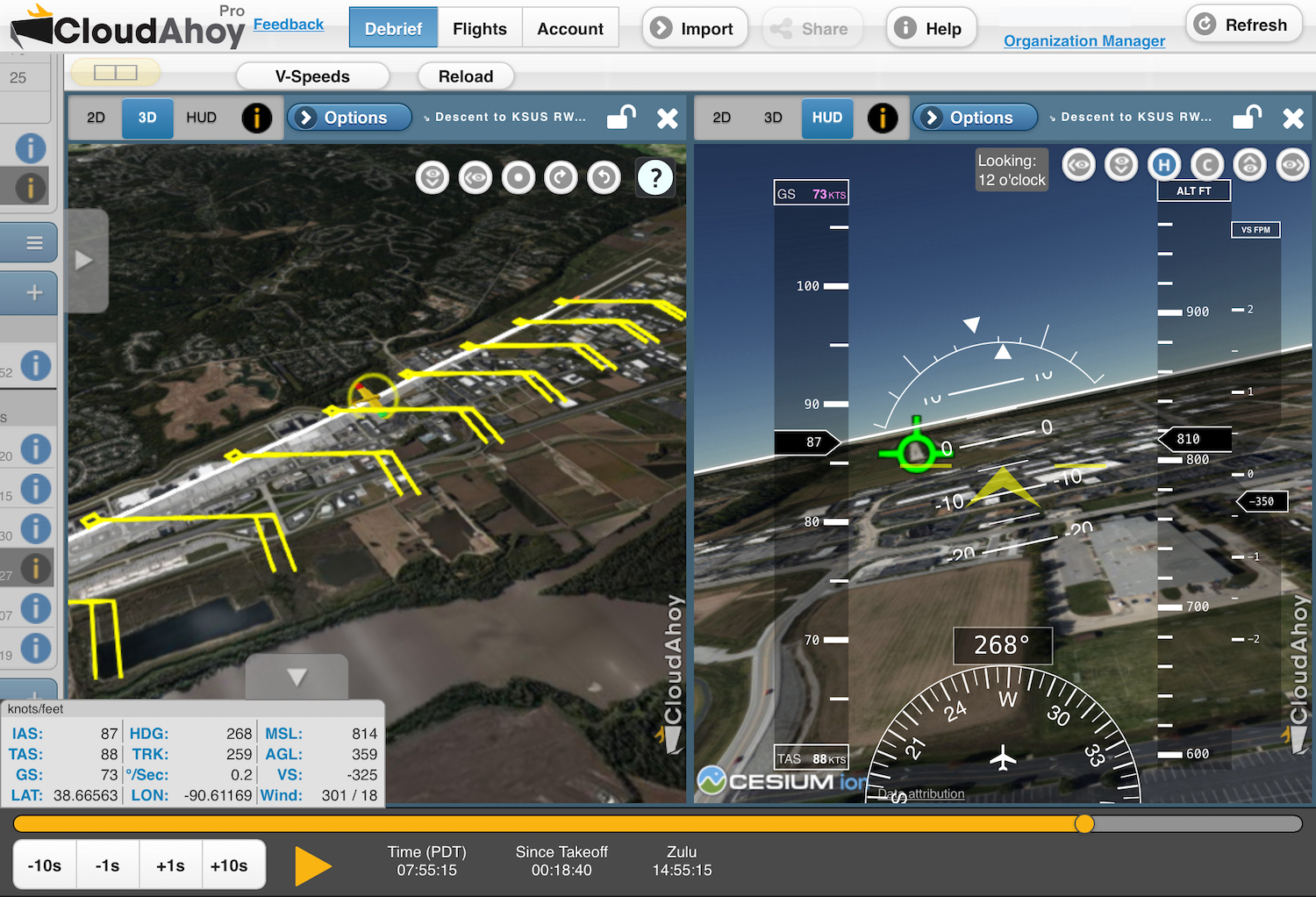
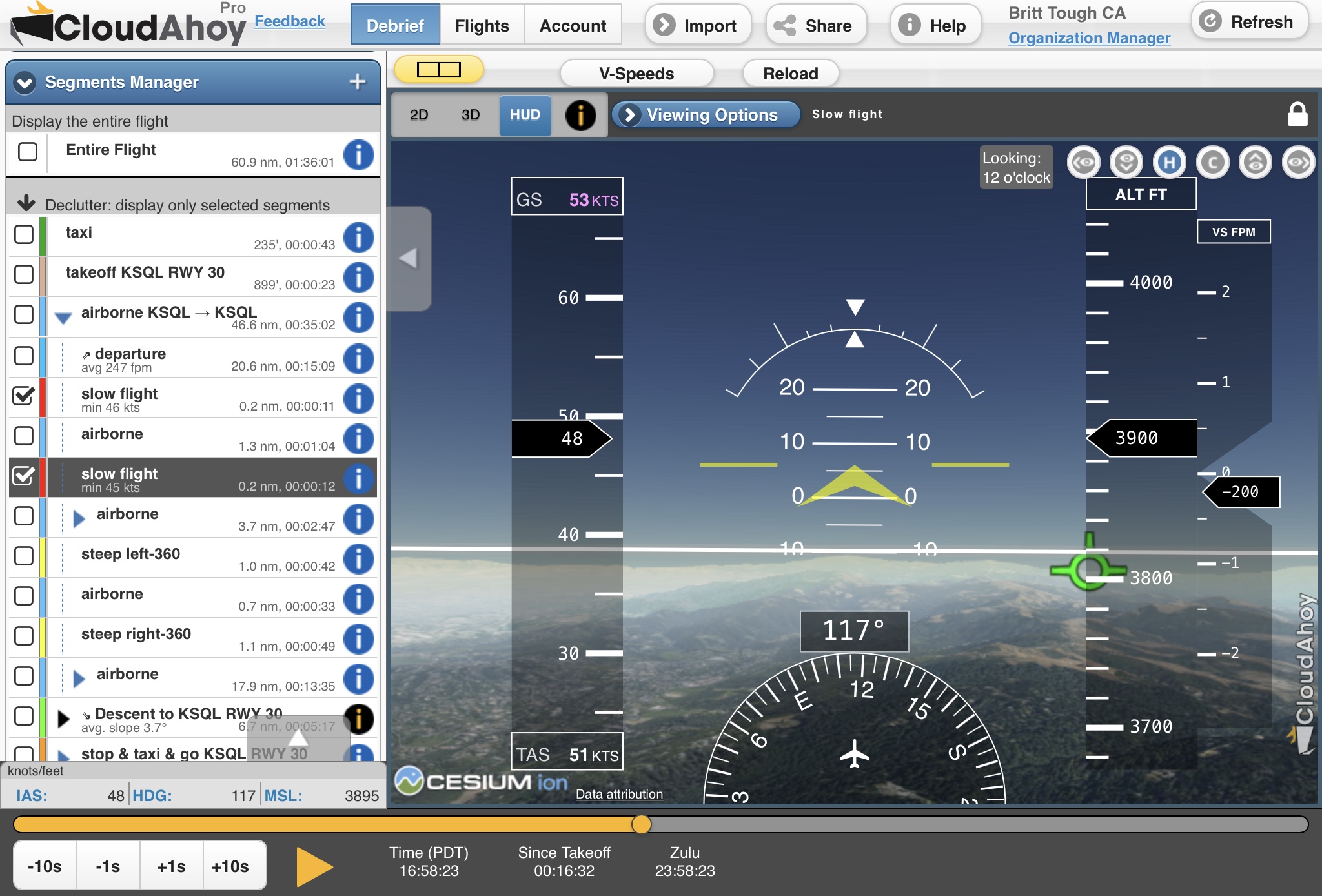

Neat! Thanks for that.